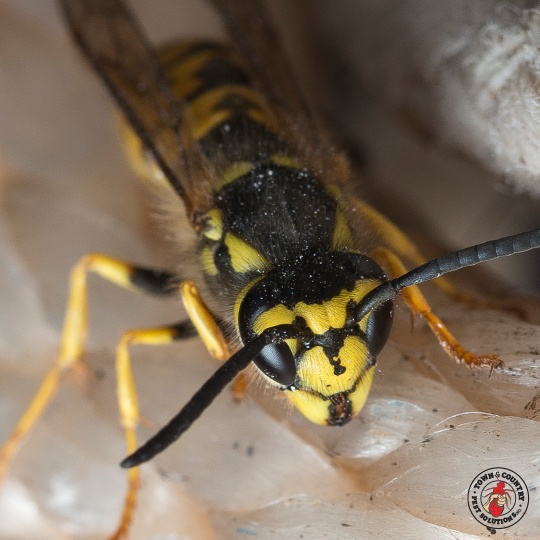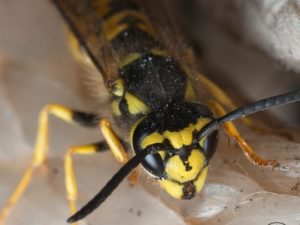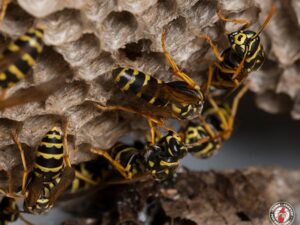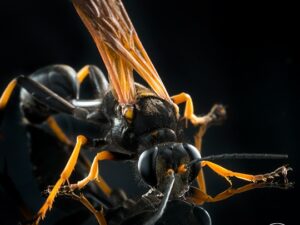
While yellowjackets are a wasp species, when people say wasps colloquially, they refer to a specific species – the paper wasp. Let’s take a look at these two species and see which is worse to have in your backyard.
Paper wasps
Paper wasps have a very slender body with a thin waist and orange-tipped antennae. While they are very similar in appearance to the yellow jacket, you can tell them apart by the fact that they dangle their legs when they fly. When it comes to their nesting habits, paper wasps build large, open, honeycomb nests that resemble an upside-down umbrella.
Their diet consists mostly of sugars, and they will scrape wood from structures to create materials for their nests. Paper wasps are relatively docile and tend to avoid humans, but they will defend their nests if they are under threat.
Yellow jackets
Yellow jackets have a stockier body than paper wasps and their antennae are completely black. When flying, these insects will keep their legs close to their bodies, as opposed to paper wasps, which as mentioned previously, will dangle their legs beneath their bodies. The yellow jacket nest will have a single entry point, and it will often be located underground or close to the ground. In the home, the nests will usually be located in wall voids.
In terms of diet, yellow jackets will eat sugar as adults and protein as larvae, which makes these insects very attracted to human settlements, where they can find both food sources. Finally, yellow jackets are very aggressive, not only defending their nests fiercely, but often attacking unprovoked. This makes them a top priority during control initiatives.
How both species are controlled
In both situations, a pest control pro will apply insecticides to the nest in order to kill off both the workers and the queen, but the approach will differ between the two species due to the structure of their nests. For paper wasps, the insecticide can be sprayed from a distance, while the pro is dressed in a protective suit, and the surrounding area is cleared. For yellowjackets, the approach is to place insecticides near the entrance of the nest or in the area surrounding it so that workers that travel to and from the colony become poisoned and die. Contact us today if you have any questions about these control processes, or if you have an infestation on your property.












